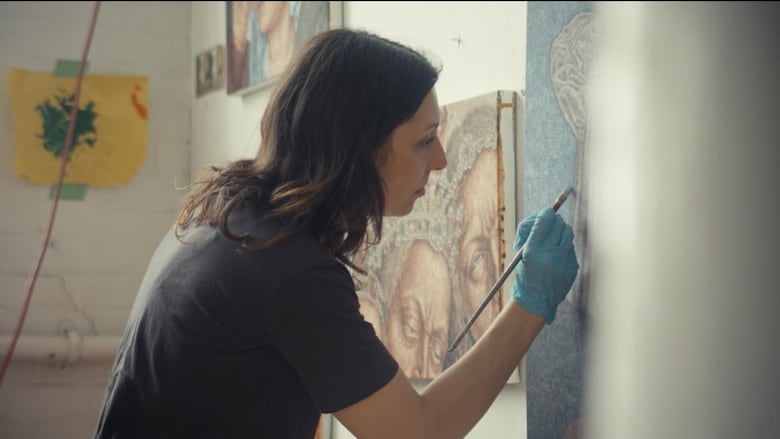Her haunting paintings are part excavation, part exorcism
In a new episode of Local Colour, artist Jennifer Carvalho says she paints 'ghosts of the past'

"The past cannot be forgotten, the present cannot be remembered," cultural theorist Mark Fisher wrote about the 21st century in his book Ghosts of My Life. The result, he says, is a melancholy that has brought our culture to a standstill.
I noticed a copy of the book in Toronto painter Jennifer Carvalho's studio, and looking around at her work, I sensed an affinity between the two.
In her art, Carvalho reproduces figures from Renaissance paintings, textbook plates and film stills, but crops them or shifts their context, often removing context entirely.
Carvalho, who is featured in the latest episode of my CBC Arts video series, Local Colour, describes her paintings as being filled with "ghosts of the past" she can "never fully understand or know" that "continue to haunt the present." "They're always there," she says.
Like in Fisher, Carvalho's ghosts represent a history left unresolved that continues to torment and distort the present.
While her paintings have a conceptual bent, they are not overly academic or rigidly didactic. What distinguishes these paintings, in fact, is their immediacy. This is in part a product of Carvalho's image collection process.
The artist scours and stores fragments from art history, keeping an archive of thousands of pictures on her computer. These range from high-resolution images to blurry JPEGs.
"There might be something about a gesture that draws me in that I want to unpick or think about. And then I'll start thinking about how I want to work with that image," she says.
"I might look at [an image] hundreds of times and then something sort of clicks."
Her most striking characters are the crying women who populate her recent work. In Woman mourning, 2023, the figure's neck is crooked at such a sharp angle as to defy human anatomy. Her fingers are interlaced in a pleading gesture, and tears fall from her greyish-blue eyes. By rendering her ghosts in vivid detail, Carvalho brings them into the present.
Technique also accomplishes this. Carvalho uses layers and layers of thin oil paint. Her palette, she tells me, took 10 years to build. The surface of these paintings is vaguely blurry, an attempt by Carvalho to create a feeling of time slowly passing for the viewer.
"You're asked to let your body slow down and allow your eye to wander," she says.
Her work was inspired by Silvia Federici's Caliban and the Witch. In the book, Federici reframes the witch trials as a violent response to the advent of capitalism, where women's bodies were targeted to maintain control and power.
"I was thinking about inherited ideologies from Western art history and how they shaped me, especially in terms of the construction of working bodies over time," she explains.
"I'm interested in thinking about how ideas and information get passed on over time to form an understanding of the past. And I kind of think about it as [if] I'm performing a kind of archaeology of art history."
Part excavation, part exorcism, Carvalho's work shows how the malevolent spirits of oppression are entombed in Western art.

